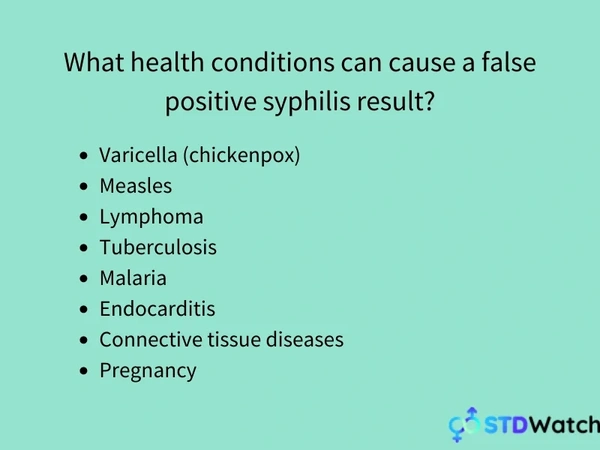- Medically reviewed by Dr. Andrea Pinto on 18 November 2021
Syphilis is a sexually transmitted infection (STI) caused by a bacteria called Treponema pallidum. This disease is also known as “the great imitator” due to its capacity to cause a wide range of symptoms that can mimic many other diseases, which can make it hard to identify. That’s why it’s so important to get tested regularly for syphilis and other STDs, but also to be able to read syphilis test results accurately.
How to read syphilis test results
Diagnosing syphilis is a little bit more complicated than simply getting a “negative or “positive” back on your test. There are different types of syphilis tests, and they have specific indications for when they should be used.
According to the CDC, men account for most cases of syphilis. However, this infection is usually very difficult to detect clinically during its early stages. The first symptom of syphilis is a small, painless sore or ulcer called syphilitic chancre which appears at the point where the bacteria entered the body — usually the genitals or the mouth. Since this chancre is painless and heals on its own within a few weeks, it’s possible for people to miss these initial signs of syphilis and allow the disease to progress through its different stages.
It’s important to keep in mind that syphilis has four distinct stages. According to the University of Michigan Health, these stages are:
- Primary syphilis: as we mentioned above, a painless chancre will develop at the point where the bacteria entered the body. This usually happens around 3 weeks after the initial exposure, but the incubation period can range between 10 and 90 days.
- Secondary syphilis: a reddish brown rash will develop approximately 2 to 8 weeks after the chancre appears. This rash isn’t itchy, and it will spread throughout the body before healing without leaving scars. Other possible symptoms during this stage can include fever, a sore throat, fatigue, weight loss, hair loss, swollen lymph nodes, and irritability, among others.
- Latent syphilis: as its name suggests, this stage happens when the bacteria goes into latency. This stage is completely asymptomatic, and it can last months or years. Despite the lack of symptoms, you can still transmit the disease to other people during this stage. Some people experience relapses during the latent stage and revert back to the secondary stage several times.
- Tertiary syphilis: during this stage, the disease can spread to many different parts of the body and cause a variety of issues. Tertiary syphilis can affect the joints, heart, skin, liver, bones, nervous system, and other parts of the body.
What tests are used to diagnose syphilis?
Syphilis tests can be classified into treponemal and nontreponemal tests. According to a study published in the journal Neurology, Clinical Practice, a single serologic test isn’t enough to diagnose syphilis, and both treponemal and nontreponemal antibodies have to be detected in order to confirm the diagnosis.
Nontreponemal antibody tests include venereal disease research laboratory (VDRL) and rapid plasma reagin (RPR) tests. Nontreponemal tests detect antibodies that aren’t specific for syphilis, which is why they need to be confirmed through the use of other tests. However, these tests are widely used for screening because they’re affordable, simple, and have a high sensitivity for the disease.
According to a study published in the Indian Journal of Dermatology, if you receive a negative nontreponemal test and don’t have symptoms of syphilis, it’s a very strong indicator that you don’t have syphilis. False positives can be caused by other conditions, such as:
- Varicella (chickenpox)
- Measles
- Lymphoma
- Tuberculosis
- Malaria
- Endocarditis
- Connective tissue diseases
- Pregnancy
That’s why you’ll be asked to take a treponemal test if you receive a positive nontreponemal test result. Unlike nontreponemal tests, treponemal syphilis tests look for antibodies which are specific to Treponema pallidum, so they can be used to confirm the screening test results.
There are different treponemal tests available, including:
- Microhemagglutination assay for T. pallidum
- T. pallidum particle agglutination
- T. pallidum hemagglutination assay
- Fluorescent treponemal antibody absorbed (FTA-ABS) test
- Chemoluminescence immunoassays and enzyme immunoassays for treponemal antibodies
The type of test that you receive will depend on which ones are available near you, and what your doctor thinks you need to confirm the diagnosis. Results from these tests are typically reported as “reactive” or “nonreactive”, and a reactive result implies that you have syphilis. Although rare, false positives can still happen with these tests, which is why they’re used in combination with nontreponemal tests and observation of your clinical symptoms.
Getting a syphilis test is easier than ever thanks to convenient at-home STD testing. Through these tests, you’ll be able to collect your sample from the privacy and comfort of your own home, and you can even get screened for several STDs at the same time. After mailing your sample back to the provider, you’ll receive your confidential results. If your test comes back positive for syphilis, you’ll also have access to medical guidance as you confirm the diagnosis and receive syphilis treatment.
Resources
- Syphilis Statistics - cdc.gov
- Stages of Syphilis - uofmhealth.org
- Diagnostic tests for syphilis - ncbi.nlm.nih.gov
- VDRL Test and its Interpretation - ncbi.nlm.nih.gov

